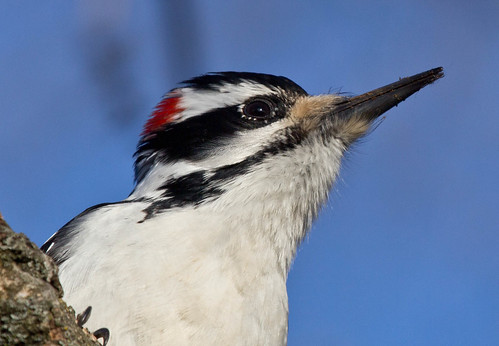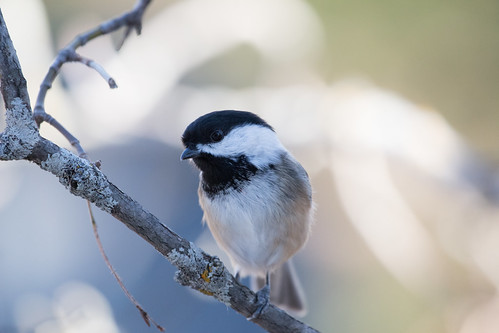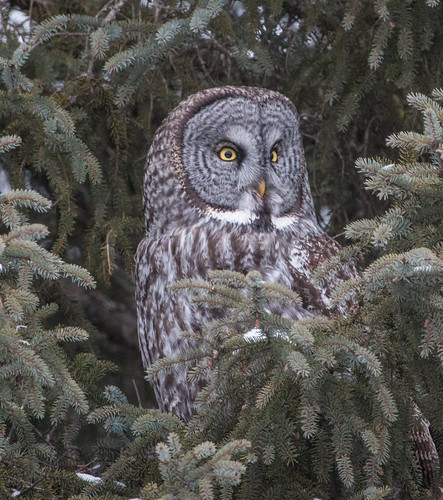Every year at the end of January I start considering whether I made the right New Year's resolution, and how well I’m sticking to it. Last year I decided that this would be the year I committed to using eBird—a wonderful program created by the Cornell Lab of Ornithology and Audubon designed to help birders keep their own personal records while sharing their data with scientists, conservationists, and the larger birding community.
Unlike other bird-listing programs, eBird is free, and anyone can access it to contribute their data online at eBird.org. Getting started on eBird is a little tricky, because for our data to be valuable, we have to keep track of a lot of details, including not just which species we saw on a particular day but how many individuals of each species we saw, and exactly where and when we saw them.
I’m nowhere near as disciplined at keeping a field notebook as I used to be, so it’s very hard to come home and remember all these details. Over the past couple of decades, when I'm out birding I've become more focused on fun interactions with birds, photographing them, explaining identification and behavior to field trip participants, and thinking about story ideas. Fortunately, the eBird team developed a really slick app for iTunes and Android called BirdLog for adding our sightings as we go, using our phone’s GPS and clock. The North American edition is $9.99, and the edition covering the entire world is $19.99.
BirdLog is quick and easy to use, after a minor learning curve—the trick is getting into the habit of using it. I wanted to make every sighting of a bird this year 100 percent accounted for on eBird, so last fall I started, in a rather haphazard way, to start keeping a daily checklist of the birds I see out the window while I’m working at home, using the BirdLog app.
 |
| A male Hairy Woodpecker |
I am mostly staring at a computer all day, and so I hardly notice every bird in my yard, so my daily working-from-home checklists fall in the eBird category of “Incidental.” When I start in the morning, I note whatever birds are out there. If I start out with 8 redpolls and 3 siskins, I mark them in. Later I may see 5 redpolls and 9 siskins. I have no way of knowing whether these include the same birds from earlier, so I keep the redpoll total at 8, but now I know the smallest number of siskins I’ve seen is 9. When I spot a single Hairy or Downy Woodpecker, I record whether it’s a male or female. Later that day, if I see a bird of the opposite sex, I know I had at least 2. When I see 4 Purple Finches, all females, at one point, any males I notice later will add to the total. I keep the day's checklist open, and at the end of the day, I press enter. [**My friend Steve Holzman commented that I should be posting stationary-count checklists a few times per day rather than one incidental checklist per day, so already I've changed my method!]
 |
| My little chickadee missing the front toes on his or her right foot. |
As we approach the end of January, I’ve only missed recording birds two days all month—both days when I was so busy that I hardly looked out a window at all. I am still working on my eBird skills out in the field. When I’m at the Sax-Zim Bog, for example, it’s far more valuable for researchers to know exactly where in the bog each bird was, so entering the data on separate checklists for each specific area is better than just entering one checklist for the whole bog. Thanks to the BirdLog app, keeping track of all that is much easier, as long as I stay reasonably focused.
I’m working on a couple of big projects right now, but when I have them out of the way, I’m going to start entering data from previous years. This data will be entered in eBird’s “historical” category. Back when we were living in Madison Wisconsin in the 1970s, I kept fairly good records, including the number of individuals of many species seen on many days—that data will provide valuable comparisons with numbers being seen nowadays.
It’ll take a long time to enter 40 years of bird sightings, but meanwhile, I now seem to be in the habit of entering my eBird data as I go. It's still going slower than it should, but my skills are steadily improving, and this year’s New Year’s resolution turned out to be easier than I expected.
 |
| Great Gray Owl in the Sax-Zim Bog. I've seen lots of these over the years, but this is only the second one I've entered into eBird. |